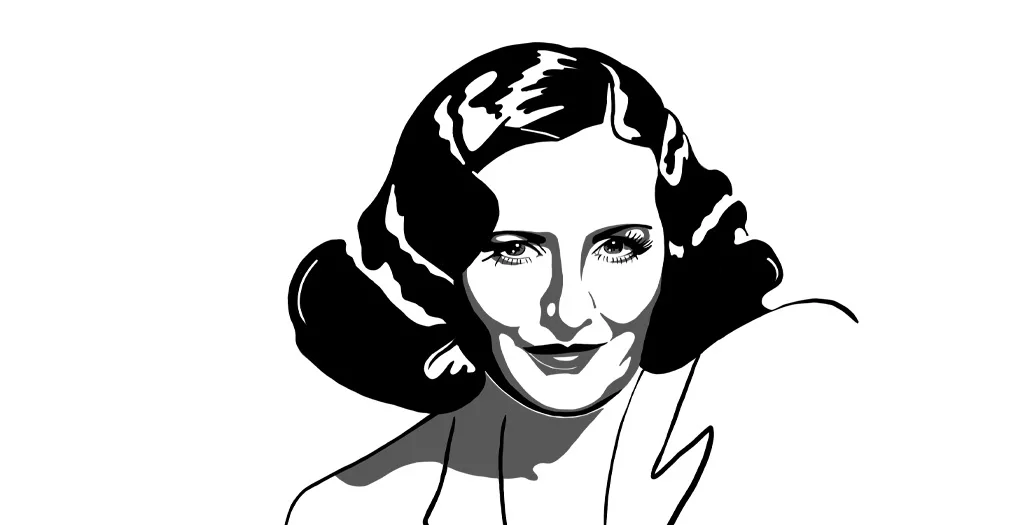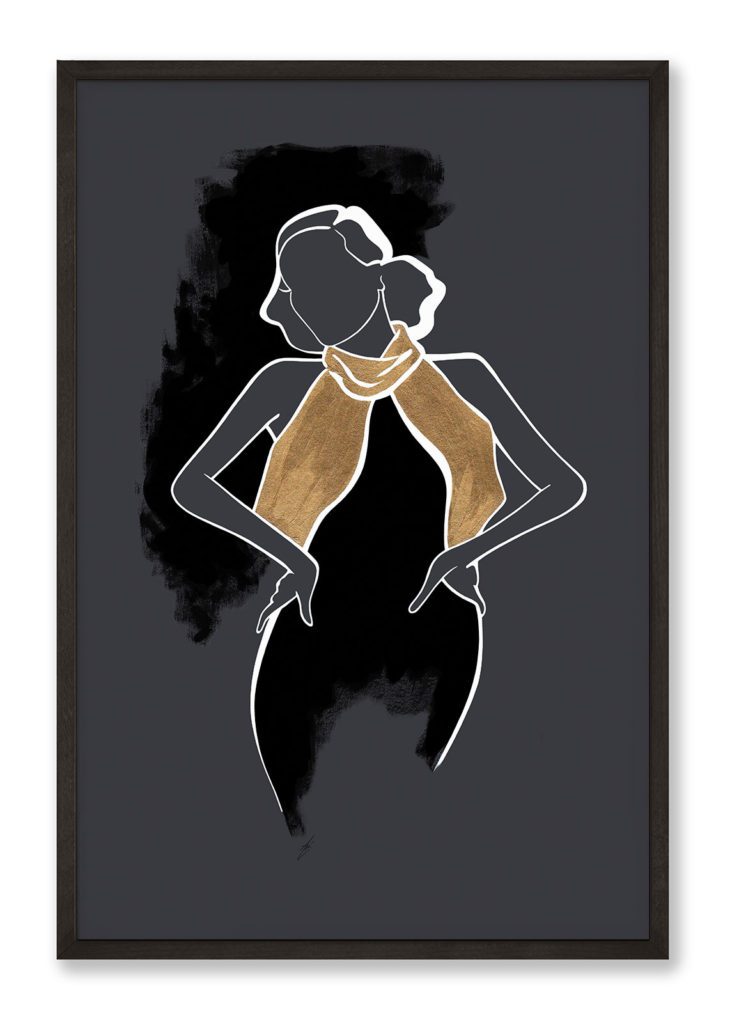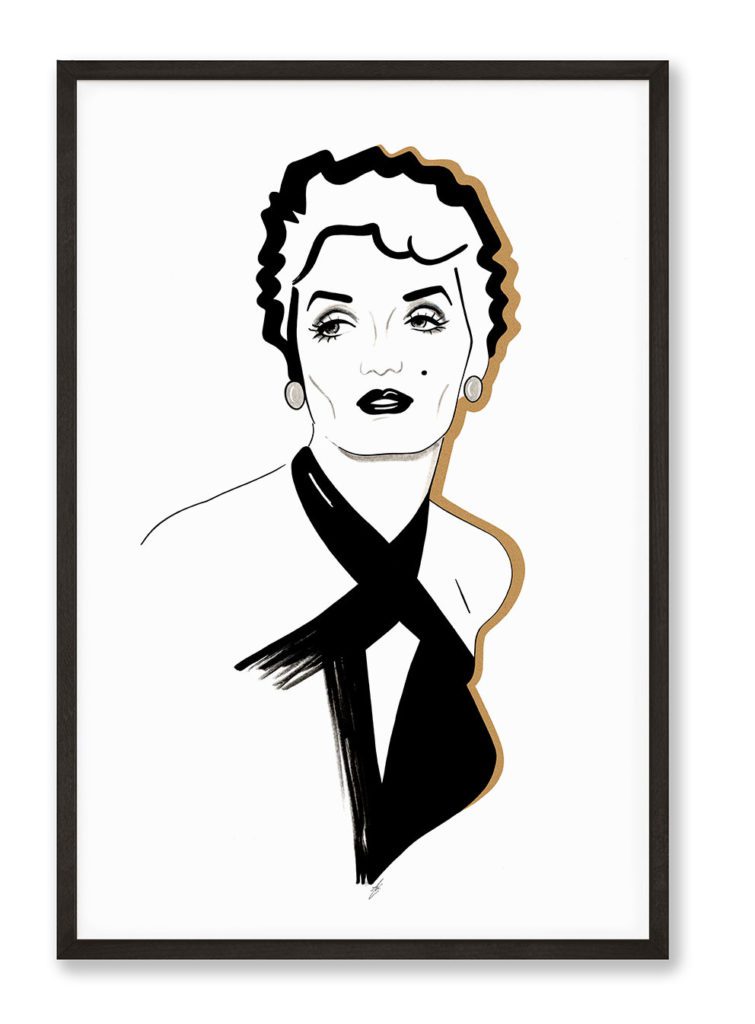Clara Bow
Mad and crazy - but what a personality!




Hi, I'm Kat!
What I am most passionate about is to inspire you to see that your life is your own and biggest masterpiece.
William Wellman said that about Clara Bow – if that does not make you want to read more, I do not know!
Did you know how the term “It Girl” had been coined? Well, we can thank Clara Bow for that.
She starred in the film “It” in 1927 at the age of 22 as a shopgirl and got catapulted to International stardom. Hence, she became the “It Girl” and basically, she became the sex symbol of the 1920s – the ultimate flapper. Others attributed to this period are Colleen Moore and Louise Brooks – these three cemented the looks and behaviours of a flapper.
LISTEN TO THE PODCAST
SUBSCRIBE TO THE PODCAST
How it all started
Clara’s start was anything but glamorous. It was dire.
She was an only child as her older sibling had died in infancy and had to grow up with a mentally unstable mother that suffered from “psychosis due to epilepsy” apparently. When she learned that Clara wanted to pursue acting, she even attempted to kill her and was eventually institutionalised. Clara herself stated that she felt deprived of her childhood as she had to take care of her mother – her father being absent most of the time. They were poor, had little to eat and moved house frequently. In the school, Bow was mocked for her hair and her poor dressing by other schools and preferred the company of boys. She dressed like them, did sports like them, cut her hair like them. Another tragedy Bow had to endure was when of her friend, a young boy, burned to death in the house adjacent to her and when she ran for rescue he did in her arms. She planned to become an athletics instructor because she loved to be physical.
But, good for her and us, she fell in love with the movies. Back in the 1920 half of all Americans went to the movies regularly (they had neither television nor streaming services back then, right?) and so did Clara. And it was there that she discovered that on the screen there was a different reality, there was beauty, there was peace, there was romance, there was simply a more perfect world. And she started to reenact everything that she had watched and was determined to become a motion picture actress. And this is where it all started.
She enrolled in an annual nation-wide acting contest which was called “Fane and Fortune” in 1921 because most of the former winners had gotten movie roles sooner or later. Bow won – but actually only the title, a silver trophy and an evening gown. But no movie role rolling her way.
So, she didn’t give up, she stepped up and asked for roles at any agency that could potentially hire her and got lots of negative feedback – too young, too little or too fat. But resilient nature that she was she finally landed a role as a tomboy on Down the the Sea in Ships. This movie was her breakthrough and she got stellar reviews. Due to this fame she was named the most successful of the 1924 WAMPAS Baby Stars (which I will cover in a later episode) and starred in several more movies on the East coast that got great reviews. That’s when she was approached by movie company Preferred Pictures to sign a contact and come to Hollywood.
Her absolute breakthrough in Hollywood was Black Oxen, in this movie Bow played flapper Janet – and as Variety put it: “”the horrid little flapper is adorably played.” And after that it is a continuous success story. Clara Bow had 8 movie releases in 1924 alone and for all of her parts she got stellar reviews. Some of them:
“She radiates sex appeal tempered with an impish sense of humour.” (Alma Whitaker of the Los Angeles Times, September 7, 1924)
“I’m sure her ‘infinite variety’ would keep her from wearing us no matter how many scenes she was in”
Hollywood Stardom
Clara Bow moved on to Paramount Pictures with EP Schulberg who had her under personal contract (which I think is freakish, but that’s the way it was).
So, she was the toast of Hollywood and everybody wanted her – because she was box office gold Even her movie The Plastic Age which was kind of mediocre was a hit with the audience because she was in it.
What is extraordinary about Bow is that she did not do rehearsals. Like at all. She wanted to be told what to do and she did it. That was the silent film era. So no need for lines. And she was apparently magic. As director Victor Fleming puts it “Touch her, and she responded with genius” and William Wellman stated the above: “She was mad and crazy, but WHAT a personality.”
Bow said about her life and success back then in 1924: “”All this time I was ‘running wild’, I guess, in the sense of trying to have a good time … maybe this was a good thing, because I suppose a lot of that excitement, that joy of life, got onto the screen.”
Her most successful movies followed in the years at paramount, including Dancing Mothers and It – the film that made her the first It Girl. Variety put her performance like this: “You can’t get away from this Clara Bow girl. She certainly has that certain “it” … and she just runs with the film”. And Carl Sandburg is quoted: “‘IT’ is smart, funny and real. It make a full-sized star of Clara Bow.
Clara Bow did transition to the talkies, the sound films, and did so with success – unlike some other silent film stars that did not well with the medium. But she did not like this new medium and was not sure whether her voice was really great. And apparently, she was closing in on a major breakdown, when Bow herself described her nerves as “all shot” and the pressures of fame, public scandals and overwork really made an impression on her mental health and she was taken to a sanatorium in 1930 to recover.
From there the turned to Nevada and Rex Bell whom she married the year after. She slept, exercised, ate nourishing food and only went back to Hollywood to make a few more films for money, so she could go back to the quiet life back in Nevada. Rex and her stayed married until her death some 30 years later. But her past caught up with her and Bow started to show some signs of psychiatric illness and was even trying to commit suicide in 1944. In 1949, she was institutionalised and diagnosed with schizophrenia, which was tied back to the incident when her mother tried to kill her as a young girl. The sad ending to this story is that Bow left the institution, but did not go back to her family, instead lived alone in a bungalow that she rarely left and that she shared with a nurse during her last years. At age 60, she died of a heart attack due to atherosclerosis.
I was always fascinated with the ultimate It girl, but her life story really made me sad. To say it with her own words: “All the time the flapper is laughing and dancing, there’s a feeling of tragedy underneath. She’s unhappy and disillusioned, and that’s what people sense.”
Clara Bow is one of the great actresses of the flapper era and the are of Old Hollywood. She defined a whole generation and fashion. So, I want to share some more fun facts about her and some learnings that I take from her life story.
Fun facts & Learnings
So, the fun facts:
- She was friends with Louella Parsons, THE gossip queen of Hollywood! And Parsons did have her back always
- She loved gambling and easily lost 10-20 thousand dollars in one night. Especially after her engagement with Gilbert was broken off, she started to slip and gamble more.
- Betty Boop is the fictionalised cartoon character based on Bow’s appearance
- She actually had red hair and used henna to dye it – and that put sales of the dye up, just like with Mae West, when platinum blond hair was copied by the masses
- She premiered the trend of painted legs … I actually had to look that trend up. Apparently, the girls of the 1920s painted their knees because the shorter hemlines made them now visible. They rouged them and alluded to some sexual activity or they actually painted pictures on the knees to draw the eyes to this now visible body part.
So, some learnings that I take from Bow and why I deem her so fascinating
- Be you – she was fascinating everyone with just who she was. She was emotional and she was full of life. She didn’t hold back, she didn’t try to be something that she was not. That translated so fabulously onto the screen. That’s why she did not need rehearsals – she just did it. And life does not have rehearsals either – you just go full in and do with what the moment requires.
- She lived completely in the moment. A source is quoted that Bow was so full of life and eagerness because for her, there was only that very moment, not today, not tomorrow, just right now. That is an intensity of the moment that makes life full and colours and mesmerising and magical. Coming to life with this attitude will make your life incomparably vibrant. Don’t we all want this?
- You never know what will happen. Her career was basically over at an age when most careers only start these days. She tried to get to her happy ending in the Nevada desert but her past came to haunt her and captured her into self-inflicted imprisonment. We all have traumas, we all have pasts, we all have the potential of health challenges, we never know how and when we will get our happy ending. We need to pace ourselves, not get overworked, not get overstressed, seek professional help and become the master of our lives. Now. Not tomorrow. Happy endings cannot be planned, they only can be lived on the daily.
- Be courageous, wear short skirts, dye your hair, cut your hair, paint your knees, get tattoos. Do whatever you like and don’t give a damn about anything or anyone ever. Make your appearance joyful and perfect just for you. Bow became the namesake of a whole generation, but she did what she wanted to do.
With all my love!
xx






